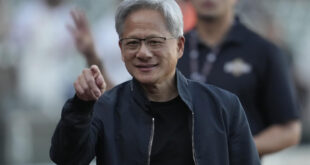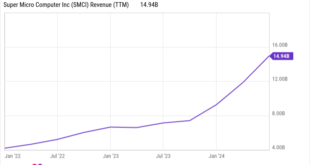Sure, Wall Street. Go ahead. Ride the dragon.
There was a moment of grace on Tuesday for investors, market analysts, and finance’s top brass when Beijing announced measures to try to reinvigorate China’s croaking economy. Pan Gongsheng, a governor of the People’s Bank of China, the country’s central bank, announced that 800 billion yuan, or about $114 billion, would be injected into the stock market. Policymakers also said they were discussing raising a fund designed to stabilize stocks and announced rules allowing Chinese banks to keep less money in reserve, freeing up 1 trillion yuan to go out asloans. They also lowered the People’s Bank of China’s medium-term lending rate and key interest rates for banks and customers. Homebuyers can also now put less money down on their purchases — an attempt to breathe life into China’s moribund property market.
The immediate reaction from Wall Street was all-out jubilee. Since the pandemic, China’s leader, Xi Jinping, has done little to stop the bleeding in the country’s property market or to get China’s ailing consumers to start spending money again. The Shanghai Composite lost nearly a quarter of its value. American companies in China are getting crushed. Foreign investors are pulling record amounts of money out of the country. This week’s announcements sent Wall Street into a state of rapture, hoping that the Chinese Communist Party is now, as in years past, prepared to catch a falling knife. The Golden Dragon index — a collection of Nasdaq-traded companies that do most of their business in China — rallied 9% following the announcements. Financial-news talking heads heralded this as a clear sign from Beijing that policymakers were getting real about stopping China’s descent into a deflationary funk. There would be more mergers and acquisitions! Lower rates could mean more private-equity activity! The famous Beijing “bazooka” could finally be on the way!
But honey, they are delusional.
Xi’s Beijing lacks the will and the power to turn China’s economy around. At the heart of its problems is a lack of consumer demand and a property market going through a deep, slow-moving correction. Xi is ideologically opposed to jump-starting consumer spending with direct stimulus checks. No will. As for the power, Goldman Sachs estimated that returning China’s apartment inventory to 2018 levels would require 7.7 trillion yuan. China’s property market is so overbuilt and indebted that the trillions in stimulus needed to fix the problem — and make the local governments that financed it whole again — would make even a rapacious fundraiser like OpenAI CEO Sam Altman blush. The “stimulus” China’s policymakers are offering is a drop in a well, and they know that. Wall Street should too. But I guess they haven’t learned.
The measures the CCP announced are intended to make it easier for Chinese people to access capital and buy property, but access to debt is not the problem here. People in the country do not want to spend money because they are already sitting on large amounts of real-estate debt tied to declining properties. Seventy percent of Chinese household wealth is invested in property, which is a problem since analysts at Société Genéralé found that housing prices have fallen by as much as 30% in Tier 1 cities since their 2021 peak. Land purchases helped fund local governments so they could spend on schools, hospitals, and other social services — now that financing mechanism is out of whack. Sinking prices in these sectors, or what economists call deflation, has spread to the wider economy. The latest consumer price inflation report showed that prices rose by just 0.3% in August compared to the year before, the lowest price growth in three years, prompting concerns that deflation will take hold, spreading to wages and killing jobs.
Given that context, many Chinese people are not eager to spend. Consumers are trading down to cheaper products, and second-quarter retail sales grew by only 2.7% from the previous year. In a recent note to clients, the business surveyor China Beige Book said that business borrowing had barely budged since all-time lows in 2021, during the depths of the pandemic. Bottom line: It doesn’t matter how cheap and easy it is to access loans if no one wants to take one out.
“These mostly supply-side measures would certainly be helpful if the problem in China was that production was struggling to keep up with growth in demand,” Michael Pettis, a professor of finance at Peking University and a Carnegie Endowment fellow, said in a recent post on X. “But with weak demand as the main constraint, these measures are more likely to boost the trade surplus than GDP growth.”
The most direct way to spur demand in a deflating economy is to send checks to households. But again, Xi doesn’t want to do that. The Chinese president is a follower of the Austrian economist Friedrich Hayek, who believed that direct stimulus distorts markets and leads to uncontrollable inflation. This flies in the face of what economists would recommend for China’s situation, but those who criticize the way Xi does things tend to disappear.
It’s clear that Beijing’s recent moves won’t solve China’s core economic problems. And Wall Street’s excitement misses another key problem: The measures aren’t even all that big. Call it a bazooka or a blitz or whatever, but this stimulus is tiny compared with what we’ve seen from the CCP in the past. In 2009, the government dropped 7.6 trillion yuan to save the economy during the global financial crisis. In 2012, it dropped $157 billion on infrastructure projects. In 2015, it injected over $100 billion into ailing regional banks and devalued its currency to boost flagging exports. The CCP has shown that it’s willing to take dramatic action to stabilize the economy. The price of that action, though, is massive debt built up all over the financial system, held especially by property companies, state-owned enterprises, and local governments. In the past, monetary easing calmed gyrations in the financial system, but growth has never been this slow, and debt has never been this high. The problem does not match the price tag here.
The Chinese Communist Party has a bubble on its hands, and it doesn’t want to blow much more or see it burst in spectacular fashion. Plus, there’s Xi, who seems fairly uninterested in restructuring the property market. He wants government investment to focus on developing frontier technology and boosting exports to grow the economy out of its structural debt problems. But those new streams of income have yet to materialize for China, and establishing them will take time and working through trade conflict, principally with the US and the European Union. Consider the easing measures we’re seeing as something like a moment for markets to catch their breath — a respite from what has been a constant stream of bad economic news. But a respite is all it is.
Linette Lopez is a senior correspondent at Business Insider.
Read the original article on Business Insider
Source link
 meganwoolsey Home
meganwoolsey Home



